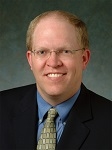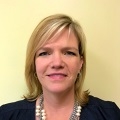ANAHEIM, California—If you thought doctors had two options—become a hospital employee or stay totally independent—you’d be wrong.
There’s a third option, called the group practice subsidiary (GPS) model, that’s somewhere between employment and independence, Curt Chase, J.D., a partner at Husch Blackwell LLP in Kansas City, Missouri, said during a presentation at the Medical Group Management Association annual conference.
While it’s not for everyone, the model has advantages for both practices and hospitals, Chase said.

It’s been a year since Johnson County Pediatrics, a nine-physician pediatric group in Merriam, Kansas, became a subsidiary of Children’s Mercy Kansas City (Missouri), a 367-bed pediatric medical center.
At a time when independent physician practices, particularly small practices, are struggling to compete, the GPS model can provide a solution for some of them, Chase said.
It worked for Johnson County Pediatrics, said practice administrator Shelly Tehven. It allowed the practice to partner with a key health system in its community, provides access to technology and data that allows it to compete in a value-based environment and is a model that maintains the physicians' autonomy, she said.
“Our physicians knew they didn’t want to be employed” and would not have entertained an arrangement in which they gave up their independence, she added.
Children’s Mercy employs 750 physicians but could not land on the right model to align with a pediatrics practice so it could provide a broader physician network until it tried the GPS model, said Jo Stueve, executive vice president and chief operating officer of the medical center.
Since the pediatricians did not want to be employed, “we had to find a win-win model,” she said.
How it works
The emerging model integrates independent practices with hospitals and healthcare systems while allowing physicians to keep their independence, Chase said. Rather than a hospital or health system owning a practice, it creates a subsidiary which employs the physician practice. The doctors are not employed by the hospital, but the hospital owns the subsidiary although it doesn’t subsidize it. The hospital has a certain level of control but the practice continues to operate much like it did before.

For hospitals, the model provides a broader physician network, better positions them to work with community physicians to manage population health and gives them strategic, long-term affiliations with doctors.
The subsidiary has its own tax ID number, a physician-led board of directors and budget, with the physicians in the practice maintaining control of how the day-to-day practice is run. The practice has access to many of the hospital’s resources, including its technology and benefits.
Hospitals, which sometimes do a poor job of managing physician practices, don’t have the headache of running the practice, Chase said.
Most practices see increased revenues under the model, and physician compensation is not limited by “fair market valuation” as it would in an employment agreement. Economically, the practice remains separate from the hospital, so there is no commingling of revenues. The structure also allows for joint payer contracting, a big advantage for small practices which generally have little negotiating power with insurers. Chase said in deals he has put together, physician revenues increase anywhere from 10% to 60%.
RELATED: Bigger isn’t always better for physician practices
A major worry for physicians when integrating with a hospital or health system is what will happen if the arrangement doesn’t work out. With the GPS model, the existing group practice remains intact and can sever employment with the subsidiary, Chase said. The practice, which maintains its location and equipment, can go back into private practice.
But that’s a rarity. “In all the deals I’ve done, the physicians never choose to unwind,” Chase said.

Exactly how a GPS is set up depends on the state where the practice is located and its regulations, Chase said. Agreements must comply with antitrust and Stark laws.
The results of one agreement
The model is not for everyone and isn’t intended to bail out a failing physician practice, Chase said. It works best with independent groups that are generally successful but looking for financial stability and for well-managed groups that are looking for synergies from a larger affiliation. It can be an answer for hospitals and physicians looking to address new reimbursement models.